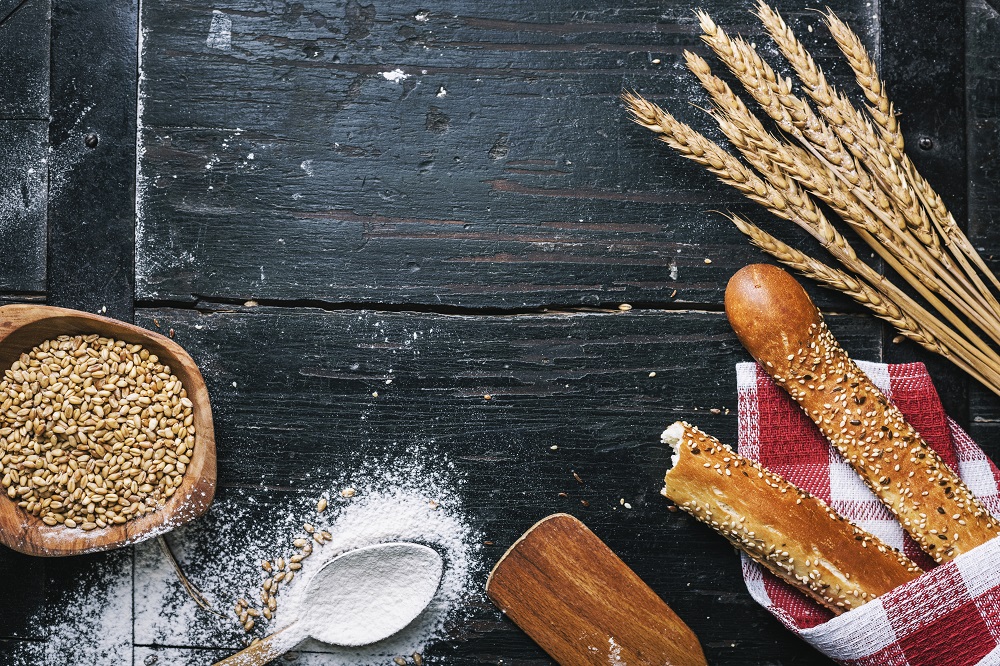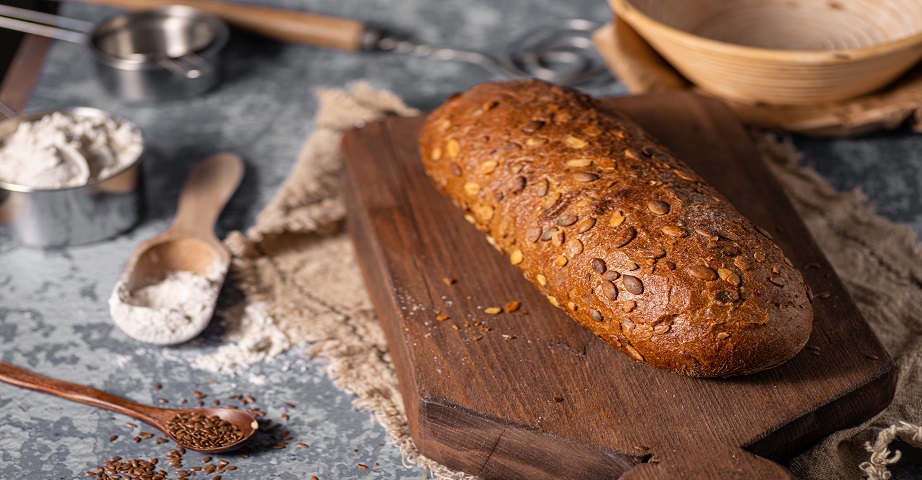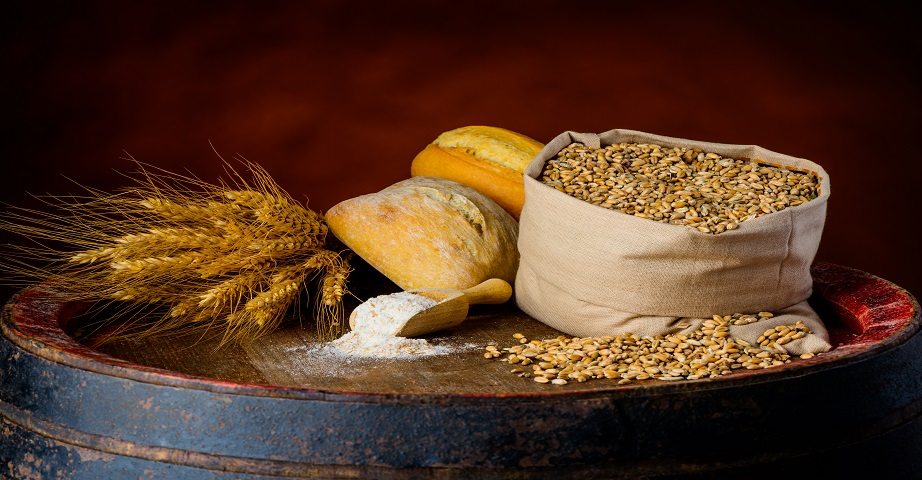Cereal products - what is worth knowing about them?

Cereal products are components of the daily diet, which are at the basis of the Pyramid of Healthy Nutrition. However, there are many myths around cereal products that make the consumption of cereal grains often limited in the daily diet, especially among people who care about weight reduction. What are the examples of cereal products and is it worth including them in the daily menu? What are the benefits of consuming grain products, and are all cereal products equal?
What are cereal products?
Cereal products are made from cereal grains and are an essential part of a properly balanced diet. In the Pyramid of Healthy Nutrition, they are at its base - just above vegetables and fruits. On the Healthy Nutrition Plate, they represent 1/3 of its volume, which indicates that cereal products should be present in every meal.
Cereal products are a source of valuable nutrients. They contain a wealth of carbohydrates, which should cover about 50-70% of the daily energy demand, depending on the supply of other macronutrients, such as proteins and fats.
The purpose of their consumption is to provide the body with the energy necessary for the proper functioning and performance of daily duties. In addition, cereal products, due to significant amounts of dietary fiber, can provide a feeling of satiety and reduce hunger.
What are cereal products? - List of cereal products
The group of cereal products may include dietary components, such as:
- groats,
- pastas,
- rice,
- bread,
- cereals,
- bran,
- flours,
- cereal grains.
Types of cereal products
Cereal products provide the body primarily with complex carbohydrates, that is, compounds ensuing as a result of the combination of at least two molecules of simple sugars by glycoside binding. Usually, this group of products can be divided into two categories, namely:
- whole grain cereal products,
- highly processed cereal products.
How do cereal products differ from each other?
Whole grain cereal products are low-processed products. Thanks to the fact that they are not subjected to numerous processing operations, they are a rich source of vitamins, minerals and dietary fibre. Thus, they are more valuable and allow maintaining a feeling of satiety for a long time, while limiting the desire to snack between meals. In addition, whole grain cereal products are digested by the body longer and do not contribute to a sudden increase in blood sugar levels, as well as to fluctuations in glucose levels. What components of the diet can be included in cereal products from full milling? - Coarse-grained groats, such as buckwheat groats, whole-grain bread, including whole-grain rye bread, wholemeal bread, wholemeal flour and rye flour products, brown rice or wholegrain pasta.
High-processed cereal products, as the name suggests, are subjected to numerous processing operations, which makes the finished product, although it still contains vitamins, minerals and dietary fibre, it provides these compounds to the body only in insignificant quantities. In addition, highly processed cereal products often also contain numerous additives such as sugar or salt, which should be limited in the daily menu, because their excessive consumption can, among others, increase the risk of developing civilization diseases, such as obesity, hypertension or type II diabetes. What highly processed products do we include in this group? - White bread, white rice, toast bread, white flour products, couscous.
Due to the growing public awareness and the desire to reach for whole grains, more and more often can also meet with the colouring of bread. Consumers who care about whole grain cereal products choose dark bread, and unfortunately honey-brown products are often wheat flour products that contain the addition of caramel, a source of sugar. Therefore, it is worth buying proven bread, and if in doubt, ask the seller about the composition of the desired product.
What do cereal products contain? - Nutritional values
Grain products, although often limited in the daily menu due to high energy, are an extremely valuable component of the diet, which provides the body with compounds such as:
- minerals, among others, manganese, zinc, phosphorus, silicon, calcium,
- vitamins, especially B vitamins, such as folic acid, vitamin B6 or riboflavin,
- dietary fibre,
- protein,
- the carbohydrates mentioned earlier.

Why is it worth including cereal products in your daily diet?
What are the benefits of consuming valuable cereal products every day? Dietary components can affect:
- improving digestion - due to the richness of dietary fibre, cereal products can support normal intestinal peristalsis, prevent constipation and regulate the rhythm of bowel movements,
- regulation of blood sugar levels - including whole grain cereal products in the menu can positively affect blood glucose levels and insulin release, without contributing to rapid fluctuations in sugar levels, but by allowing slow and systematic energy sourcing.
- support of the immune system - thanks to the richness of vitamins and minerals, cereal products can positively affect immunity, strengthening the immune system,
- proper heart function - choosing whole grain products can indirectly support the work of the circulatory system. This is due to the fact that cereal products contain significant amounts of dietary fibre, which can help reduce cholesterol levels and thus reduce the risk of developing cardiovascular diseases,
- the process of weight loss - contrary to appearances, cereal products can support weight reduction. It is enough to include whole grains in the slimming diet, which will increase the feeling of satiety and eliminate the desire to snack,
- the work of the nervous system - cereal products are a source of B vitamins that positively affect the work of the nervous system, which can, among others, contribute to lowering stress levels and improving mood. Therefore, the inclusion of whole grains in the diet may also have a positive effect on mental health.
The most popular types of cereals
Cereal products are made from many different cereals, and the type of grain affects the nutritional value of the product and its glycemic index and taste.
The most common grain used in food production is wheat. Interestingly, there are about 100 different varieties of this cereal in the world, and the most common are durum wheat and common wheat. It is a cereal with a slightly sweet taste, which is used for the production of wheat flour, as well as bread, pasta, cereals and groats. Wheat contains the most protein of all cereals, as well as vitamins and minerals.
Commonly used in the world grain is also rye, which has a slightly more intense taste than wheat. Rye is most often used in the production of bread, pasta and cereals. Cereals provide the body with tryptophan, which is considered a precursor of serotonin, a happiness hormone that can have a positive effect on well-being and mood.
The oldest grain is millet, which is currently consumed most often in the form of millet groats. It is a gluten-free cereal that is a valuable source of iron and silicon. Due to its versatility, products such as millet groats are great for both sweet and salty dishes.
An element of a healthy and balanced diet is also oats, which is most often used in the menu as oatmeal. It is a cereal that contains large amounts of protein, as well as iron or silicon. Noteworthy is also corn, which due to the sweetish taste is very popular. It is a gluten-free cereal that is often the basis of breakfast cereals. Due to the expressive and slightly nutty taste and richness of nutrients, buckwheat is also appreciated, from which are made, among others, buckwheat groats, as well as barley, which, in the Polish diet is most often consumed in the form of barley groats.
Which cereal products are worth eating?
If you are wondering which cereal products to include in your daily menu, the answer is simple - all whole grains products! In smaller quantities, highly processed cereal products can also be included in the menu, but whole grains should be more often served on your table. Due to the fact that cereal products provide the body with many valuable ingredients, it is not worth giving them up just because they contain slightly more calories than other products. The best solution is to use a balanced diet, which provides an adequate supply of energy, and at the same time is based on the Pyramid of Healthy Nutrition and contains healthy and valuable products.
Wholegrain pasta is great as a meal with the addition of meat and sauce or sweet - with yogurt, cheese and fruit. The variety of groats makes that everyone can found a product that will satisfy their individual preferences - when looking for groats that have a low glycemic index, it is worth choosing a pot barley or bulgur groats, however, in order to satisfy the appetite and provide the body with significant amounts of valuable nutrients - reach for buckwheat or millet groats. When deciding on rice, it is worth choosing brown rice, which will provide the body with significant amounts of valuable ingredients, and in addition can positively affect cholesterol levels. For baking or thickening sauces, it is better to choose wholemeal flours, for the production of which all parts of the grain were used, namely husk, bran, germ and endosperm, for example, rye flour, oat or spelt flour.

Which cereal product contains the most dietary fibre in 100 g? 10 fibre-rich cereal products
Among the cereal products that are distinguished by the highest content of dietary fibre, can mention products such as:
- Wheat bran - 42.4 g
- Wheat germ - 14.0 g
- Rye flour - 12.8 g
- Rye flakes - 11.6 g
- Oat flour - 11,0 g
- Oatmeal - 10.1 g
- Barley flakes - 9.6 g
- Wholemeal rye bread - 9.1 g
- Buckwheat flakes - 8.7 g
- Wholegrain pasta - 8.0 g

